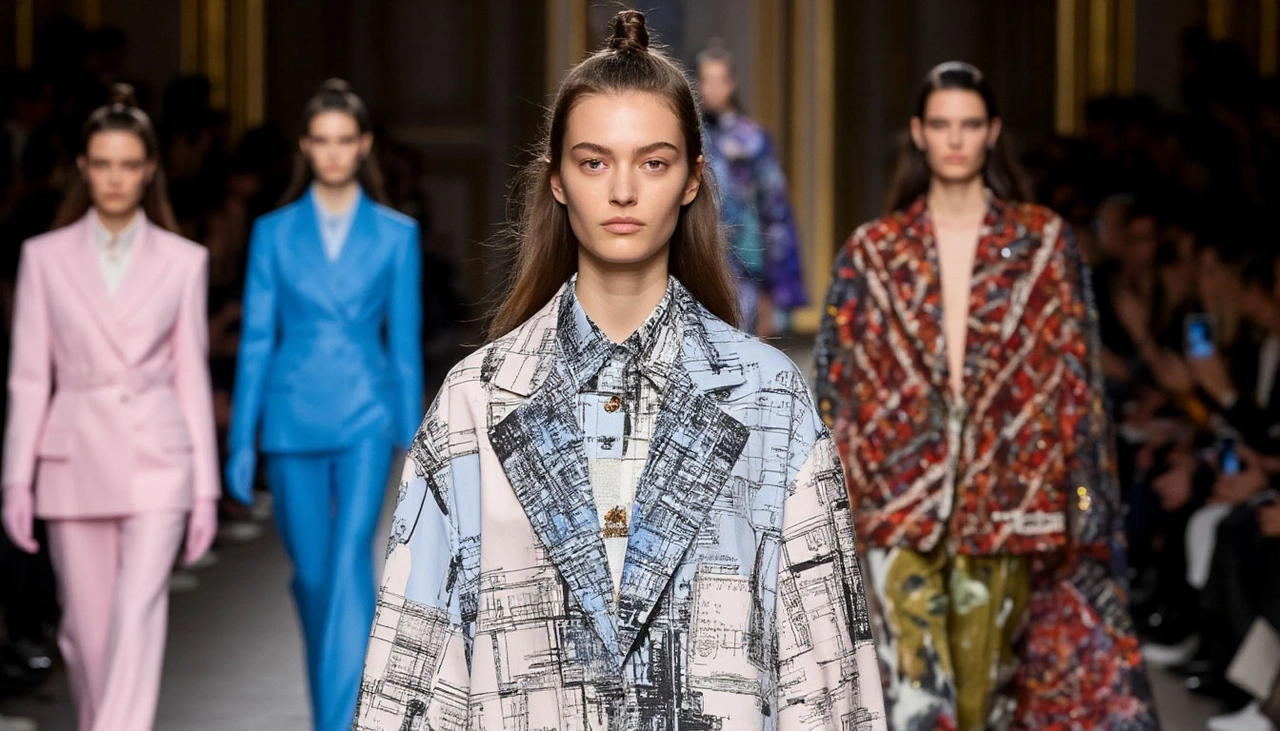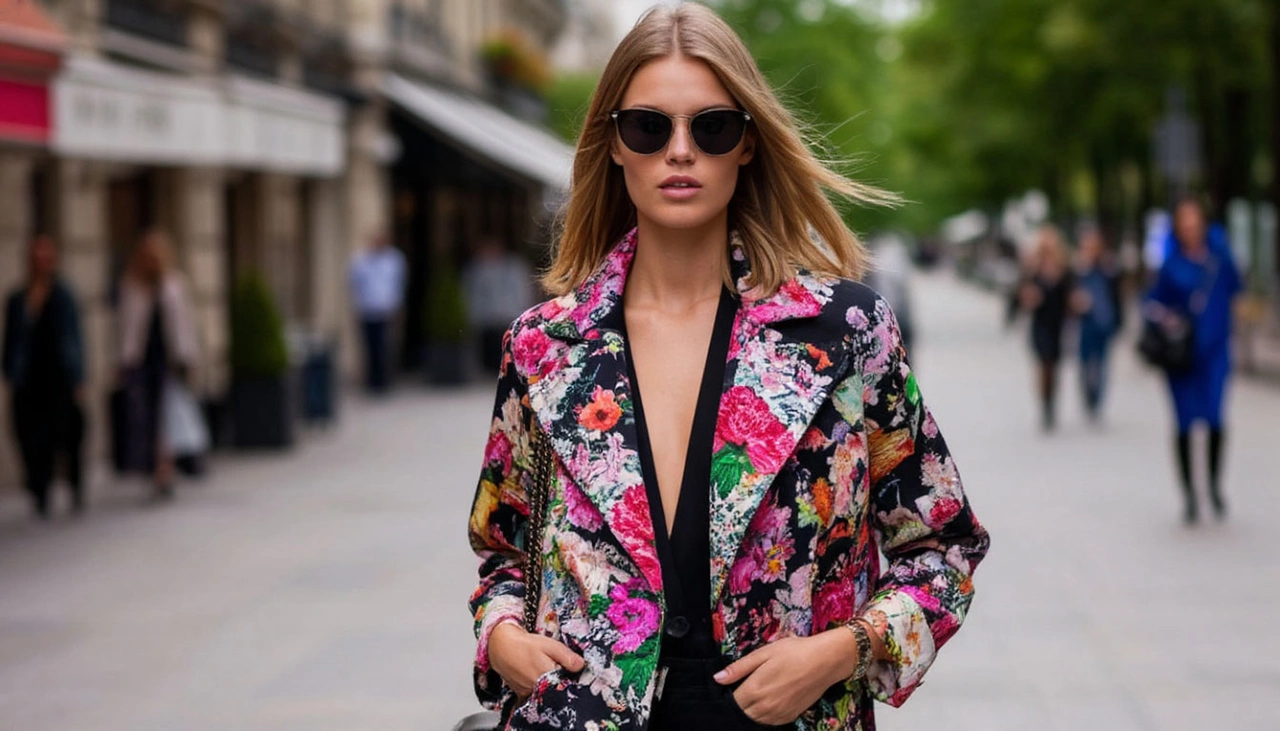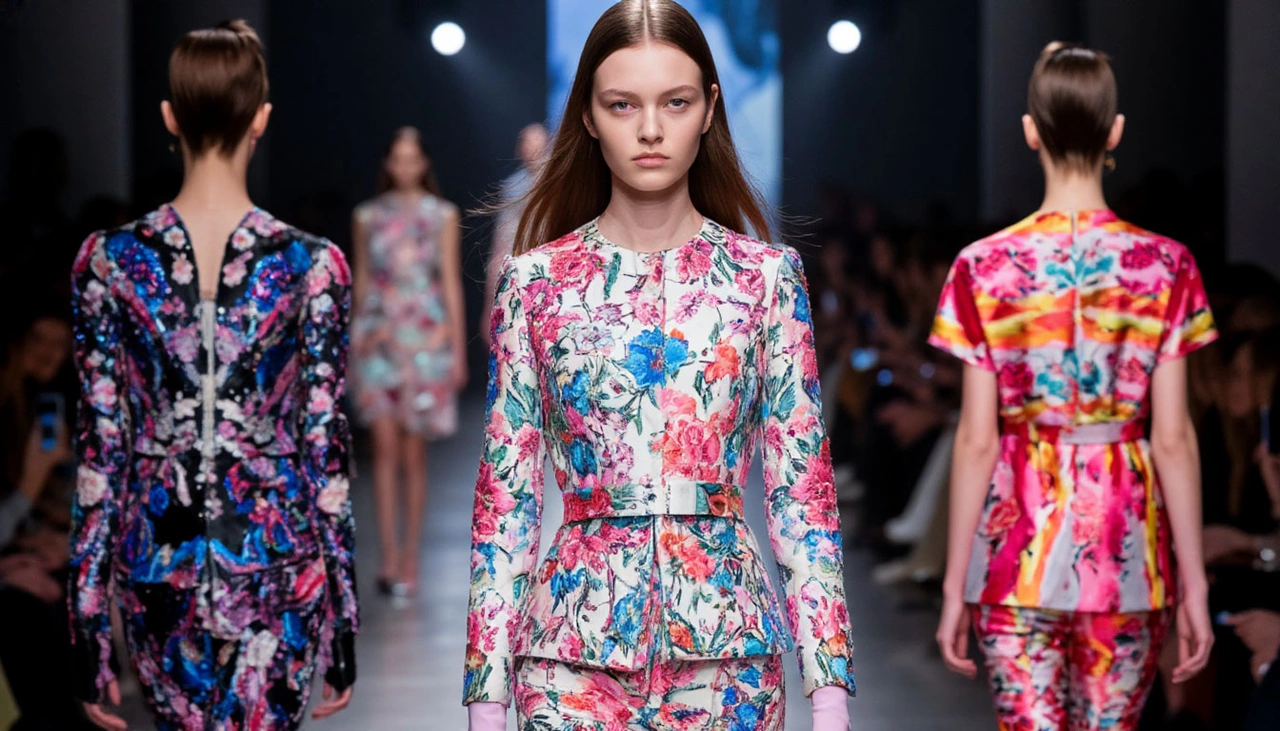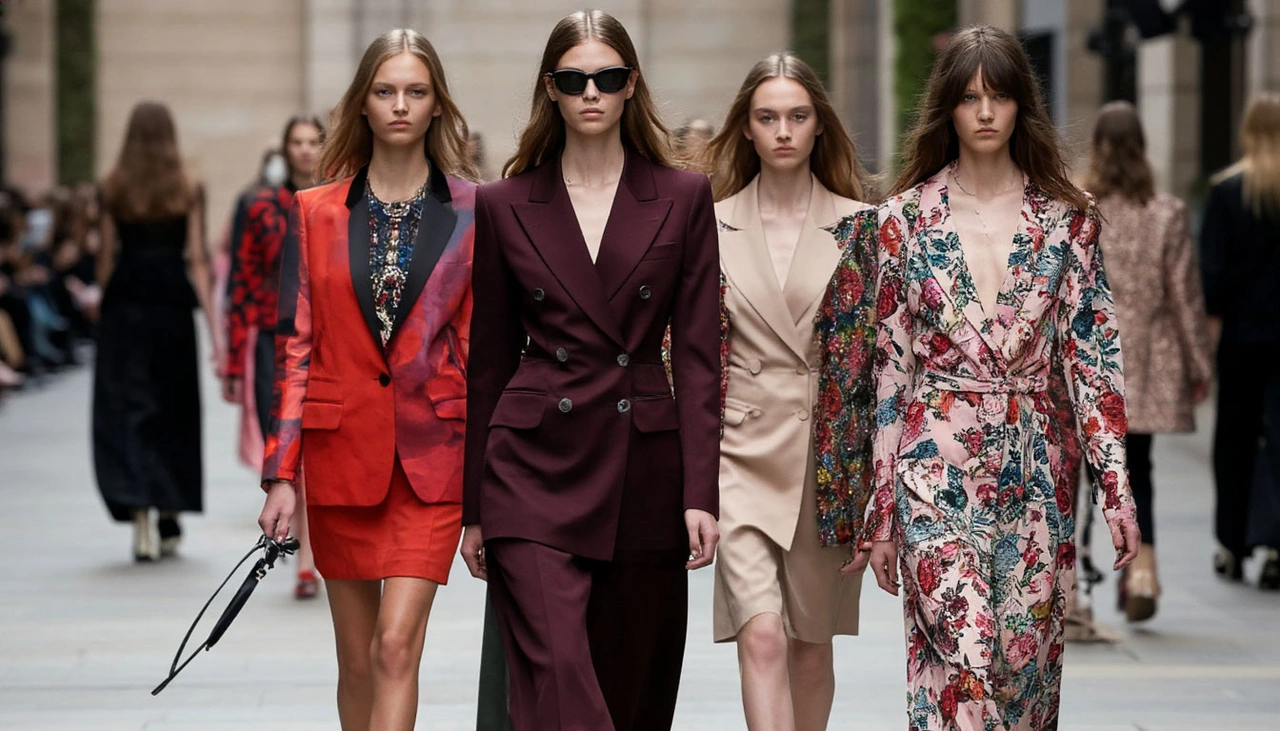Beauty Tips Posts on Crowch
If I had to choose one word to define Paris Fashion Week Spring/Summer 2025, it wouldn’t be “elegance,” “avant-garde,” or even “innovation.” It would be: reflection.
Paris, the historical heart of haute couture, has always been a city where fashion speaks louder than words. But this season, the message wasn’t just about aesthetics or trend forecasting — it was about holding up a mirror to who we are and where we’re going.
After a few turbulent years of aesthetic disorientation — think “core” trends flaring and fading in TikTok time, AI-generated garments flooding digital showcases, and a thousand debates about sustainability that felt more performative than practical — the SS25 shows offered something radically different: depth.
Take Maison Margiela, for instance. John Galliano’s latest collection was nothing short of a visual poem. Gone were the theatrics for their own sake; instead, models walked a rain-slicked runway in garments that seemed to whisper instead of scream. Frayed silks, reworked archival tailoring, and biodegradable embellishments spoke of impermanence, memory, and care — not just for the planet, but for history and craft.
Balenciaga, ever the disruptor, surprised everyone by going tactile. After years of exaggerated silhouettes and ironic statement pieces, Demna presented a muted, contemplative collection grounded in wearability and — dare I say — vulnerability. Slouchy linen suiting, textured cottons, and recycled denim reflected not post-apocalyptic despair, but a kind of emotional softness. One look in particular — a sand-colored coat with hand-sewn seams exposed like stitches in skin — felt like an open wound dressed beautifully.
But perhaps the most talked-about show was Marine Serre’s, and not for shock value. Her presentation, staged in a solar-powered open-air greenhouse on the outskirts of Paris, was a living, breathing testament to regeneration — both ecological and cultural. Models walked barefoot on moss-covered ground, wearing garments made from upcycled sportswear, vintage silks, and even deadstock bridal lace. It wasn’t just a runway show. It was a statement of values. A manifesto.

So what does all this mean for fashion lovers like us — the ones who don’t just watch fashion but live inside its rhythm?
It means that style is no longer separate from substance. We’re moving past fashion as fantasy into fashion as function — not just in utility, but in emotional resonance. There was a time when fashion week was primarily about aspiration. You watched, you dreamed, and you maybe bought the fragrance. But in 2025, shows are built around participation. Sustainability isn’t a feature — it’s a foundation. Inclusivity isn’t tokenized — it’s embodied.
This year’s Paris Fashion Week also reflected another major shift: the role of technology in fashion has matured. No longer a gimmick, digital design tools, AI-assisted patterning, and even blockchain-backed material tracking were integrated into the collections — invisibly, intelligently. Instead of digital avatars walking in cyberspace, we saw human bodies in human spaces, enhanced (not replaced) by tech.
For me, one of the most moving aspects of this season wasn’t on the catwalk at all. It was in the conversations that buzzed afterward — in cafés, on social media, in voice notes shared between fashion students and editors. People weren’t just discussing what the designers did, but why. There was dialogue. Curiosity. Even disagreement — which, in fashion, is a sign of vitality.
2025 may not be the flashiest year in fashion history, but it might just be one of the most important. It’s the year the industry collectively asked: Who are we serving? What are we reflecting? Are we reacting — or responding?
As someone who’s followed fashion my whole life — through the Tumblr era, the influencer explosion, the digital runway revolution — I can say this confidently: something’s shifting. The shows in Paris this season felt like the start of a new chapter. One where beauty isn’t just about image, but about impact. And where the clothes we wear carry not just a designer label, but a deeper story.
And maybe that’s what fashion should’ve been all along.
If I had to choose one word to define fashion in 2025, it wouldn’t be “bold” or “futuristic.” It would be “aware.” This year, more than ever, the fashion world isn’t just about what's on the runway — it’s about what it means to be on that runway. What it means to wear clothes in an era of climate anxiety, identity fluidity, and digital saturation. And the answers aren’t always easy, or beautiful. But that’s what makes 2025 such a fascinating year to be watching fashion closely.
Let’s start with the pace. After years of hyper-acceleration — drops every week, microtrends born on TikTok and dead within a month — we’re finally seeing something unexpected: slowness. Major brands like Loewe, Bottega Veneta, and The Row are leaning into timeless silhouettes, craftsmanship, and materials that tell stories rather than scream for attention. Quiet luxury isn’t just a buzzword anymore; it’s a philosophy. Even houses like Balenciaga, once famous for provocations, have begun to whisper instead of shout.

There’s a reason for this. Consumers in 2025 are burnt out. They’re tired of chasing trends and building wardrobes that expire faster than a smartphone. Gen Z — the generation once accused of destroying fashion norms — is now leading a movement towards intentionality. Thrifting isn’t just cool; it’s cultural currency. Re-wearing outfits is no longer a faux pas but a flex. And AI-generated personal stylists, integrated into smart mirrors or apps like Vesta, are helping people curate rather than consume.
But don’t mistake this shift for boredom. If anything, 2025 is the year that proved minimalism can be thrilling. Take the Fall/Winter shows in Paris: Valentino's sculptural coats in deep forest green, or Rick Owens’ unexpectedly romantic take on utility wear. These weren’t just garments — they were quiet rebellions. Clothes that spoke to our craving for meaning in an increasingly artificial world.
Which brings me to the digital. We’ve reached a strange point in fashion’s love affair with tech. The metaverse, once hailed as the next frontier of runway and retail, feels oddly passé in its first iteration. Digital-only fashion shows now compete for attention with hybrid events that combine tactile installations, VR immersion, and physical spaces that blur reality. Take Copenhagen Fashion Week's collaboration with environmental artists: models walked through living ecosystems, reminding the audience that fashion still belongs to the earth, not the cloud.
There’s also a noticeable softening of aesthetic codes. Gender-fluid fashion isn’t revolutionary anymore — it’s normalized. And yet, it’s evolving. Instead of “de-gendering” fashion, many young designers are reintroducing traditionally gendered elements in new contexts. Think lace on workwear, suiting reimagined with corset structures, or sneakers built with ballerina poise. The message? Gender is not erased; it’s expanded.
Another shift that feels emblematic of 2025: the return of the emotional narrative. Clothes are once again telling stories — not just in marketing campaigns, but in their very fabric. Nigerian designer Tolu Olowo’s collection “Inheritance” used textiles passed down through generations, each piece woven with memory. Meanwhile, New York’s underground label W//OVEN created a line based on collective grief, embedding community-submitted voice notes into the seams of garments. It’s conceptual, yes — but also deeply human.
And of course, no 2025 fashion analysis would be complete without mentioning sustainability. But here’s the twist: the conversation is no longer just about materials, but about systems. Circular fashion is getting real — not just through upcycled denim or biodegradable buttons, but through entirely new ownership models. Subscriptions, rentals, peer-to-peer fashion swaps. Even fast fashion giants like Zara and H&M are now investing heavily in repair services, incentivizing customers to fix instead of throw out. It’s not altruism; it’s survival.

In the end, fashion in 2025 feels like a meditation. Less performance, more presence. Less identity as spectacle, more identity as exploration. We’re dressing not to impress strangers, but to recognize ourselves — or sometimes, to hide, rest, recharge.
I won’t pretend it’s perfect. The industry still has enormous blind spots: size inclusivity remains inconsistent, labor rights in global supply chains are still violated, and the obsession with novelty hasn’t fully disappeared. But there’s movement. There’s awareness. And there’s something rare: restraint.
In a world constantly demanding more, fashion in 2025 is asking a radical question: what if less is finally enough?
If you’ve been paying attention to fashion lately, you’ve probably noticed that 2025 isn’t about shock value, eccentricity, or even trends in the traditional sense. It’s about pause. About exhale. About rethinking not just what we wear — but why we wear it.
After several years of global upheaval — from pandemics to climate anxiety to economic turbulence — fashion seems to be regaining its breath. No, it hasn’t become boring. But it has become quieter, more intentional, more introspective. And within that silence, a new set of questions emerges — questions fashion has long avoided. Why do we wear what we wear? What’s behind the fabric, the cut, the brand? Who gets to belong in fashion, and who’s still left on the outside?

Silence as the New Luxury
The most powerful trend this year isn’t visual — it’s philosophical. It’s slowness. Brands are stepping away from the frantic pace of collections and fashion calendars. Words like timeless, seasonless, and essential dominate the conversation. Garments are becoming investments again — not just trophies from the latest hype cycle.
Take Bottega Veneta’s Spring/Summer 2025 collection: it’s a love letter to craftsmanship. No gimmicks, no flash — just texture, shape, and quiet. Jonathan Anderson at Loewe offers reimagined classics through form and feel. Even Balenciaga, once the provocateur of fashion shock, is embracing a new kind of restraint — nearly philosophical in tone.
Fashion is no longer shouting. And that, in itself, is a bold statement.
Identity: Not a Mask, But a Space
The old idea that “fashion is self-expression” is evolving in 2025. It’s no longer just about choosing between skirts and pants. It’s about navigating identity between cultural codes, social cues, and digital layers. More than ever, clothing has become a space where we can be ambiguous, vulnerable, and unresolved.
Young designers — from AREA to rising brands across Latin America and Asia — are creating clothes that don’t impose gender, style, or status. They offer flexibility, fluidity, openness. The 2025 aesthetic isn’t just about layering fabric — it’s about layering meaning.
Digital, Physical, and the Body in Between
Tech is still on the runway, but with more nuance. The days of metaverse hype and NFT fashion drops are fading, replaced by something more hybrid and grounded. Designers are now exploring digital-physical pairs as tools for everyday function, not just spectacle. You might wear a dress in real life and its AR counterpart lives with your avatar — not as a novelty, but as a natural extension.
This evolution changes how we perceive the body, too. It no longer has to be ideal. It can be scanned, reshaped, interpreted — both digitally and physically. Fashion in 2025 is no longer about “displaying” the body, but about “experiencing” it. We’re not dressing for others’ gaze — we’re dressing for our own inner resonance.

Sustainability: From Buzzword to Ethos
“Sustainability” has echoed through the industry since the early 2010s. But in 2025, it finally feels lived-in, not just branded. Brands aren’t just using recycled fabrics; they’re rethinking supply chains, production cycles, and the very idea of ownership.
What inspires me most is the rise of local craftsmanship, micro-batches, and transparent production. It’s no longer about made in Italy — it’s about made with time. Consumers are asking smarter questions: Who made my clothes? How were they paid? What happens to this garment when I’m done?
Fashion as a Mirror, Not a Megaphone
Ultimately, fashion in 2025 reflects not just what we want to wear, but how we want to live. It has become quieter, smarter, more layered. We no longer chase looks — we search for feeling. Clothing, in this new era, becomes a second skin — not just to the body, but to the soul.
As someone who follows fashion not for the glamour but for the meaning, I find this deeply hopeful. For the first time in years, fashion isn’t dictating — it’s listening. It’s not offering ideals — it’s asking questions. And that makes it not just beautiful, but truly alive.